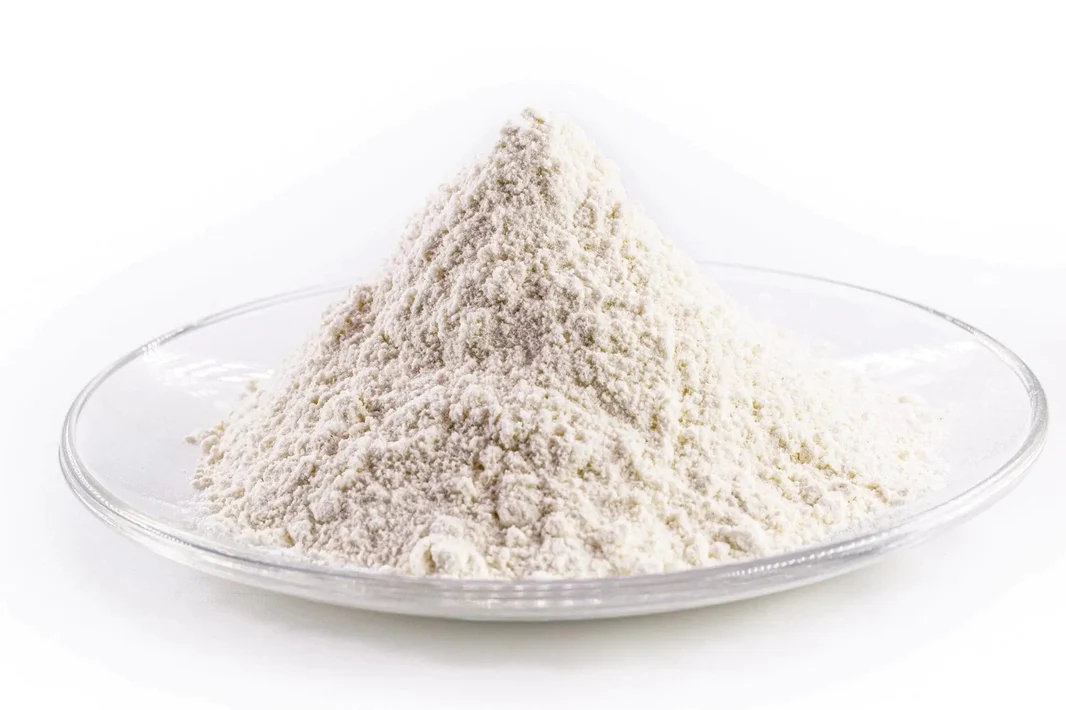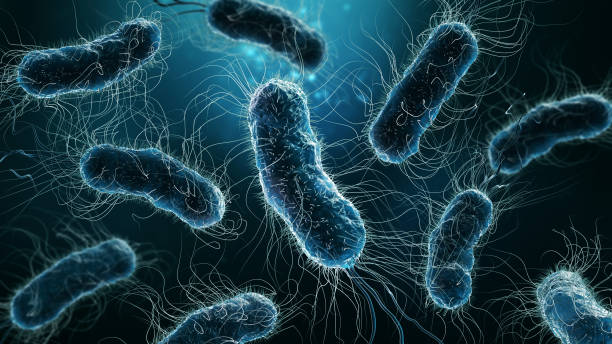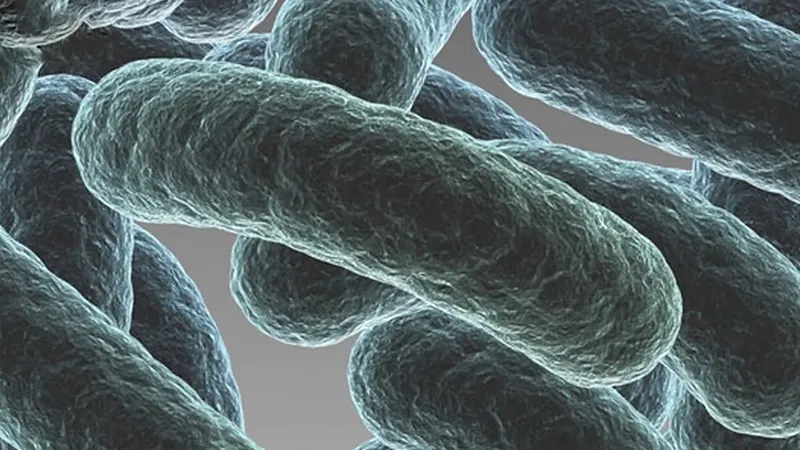
What Is Biofilm?
The bacteria most frequently responsible for healthcare associated infections include Escherichia coli, Staphylococcus aureus, Staphylococcus epidermidis, Enterococcus, Klebsiella, Proteus and Pseudomonas. Among the biofilm forming bacteria, E. coli is by far the most common bacterium associated with urinary tract infections, whereas S. aureus and S. epidermidis are most frequently isolated from cardiovascular devices. Biofilms can form on surfaces in aqueous environments, including medical devices, pipes, and even living tissues. Once free-floating bacteria attach to the bladder or an indwelling catheter for example, the immediately begin forming a colony and produce a matrix of extracellular polymeric substances (EPS). The matrix covers and shields the microbes from the host environment. This combination of microbes and protective matrix is termed biofilm.
1. Biofilm Basics: Form and Function
Biofilms are not mere collections of isolated microorganisms; they are sophisticated structures with distinct layers and a matrix that serves as a protective shield. The matrix, primarily composed of polysaccharides, proteins, and nucleic acids, provides structural integrity and facilitates communication among microbial cells. This intricate organization enhances the resilience of biofilms, making them resistant to antibiotics and immune responses.
2. Formation Dynamics
Biofilm formation typically follows a series of stages. Initially, planktonic (free-floating) microorganisms adhere to a surface, facilitated by various factors such as surface properties and environmental conditions. Once attached, these microorganisms begin producing EPS, creating a foundation for the biofilm. As the biofilm matures, cells continue to replicate and communicate, contributing to its structural complexity.
3. Biofilm in Nature
Biofilm formation typically follows a series of stages. Initially, planktonic (free-floating) microorganisms adhere to a surface, facilitated by various factors such as surface properties and environmental conditions. Once attached, these microorganisms begin producing EPS, creating a foundation for the biofilm. As the biofilm matures, cells continue to replicate and communicate, contributing to its structural complexity.
In natural environments, biofilms play crucial roles in nutrient cycling, wastewater treatment, and the health of aquatic ecosystems. For example, biofilms on riverbeds contribute to the breakdown of organic matter, influencing water quality. Understanding these natural processes can aid in harnessing biofilms for beneficial purposes.
4. Biofilm and Human Health
In the context of human health, biofilms pose challenges, especially in the medical field. Biofilm formation on medical devices, such as catheters or implants, can lead to persistent infections. Chronic conditions like cystic fibrosis are also associated with biofilm formation in the respiratory tract. The protective nature of biofilms makes eradicating infections challenging, requiring innovative approaches to treatment.
5. Dental Biofilms: A Common Encounter
Dental plaque, a biofilm that forms on teeth, is a prevalent example of the impact of biofilms on human health. Composed of bacteria and their byproducts, dental biofilms contribute to tooth decay and gum disease. Exploring ways to disrupt or control dental biofilm formation is a significant area of research for improving oral health.
6. Biofilm and Antibiotic Resistance
The antibiotic resistance crisis is exacerbated by biofilms. The protective matrix prevents antibiotics from reaching bacterial cells, allowing microbes within the biofilm to survive and develop resistance. This aspect emphasizes the need for novel therapeutic strategies that can penetrate and dismantle biofilms to effectively treat infections.
7. Biofilm Research and Therapeutic Approaches
Researchers are actively exploring strategies to combat biofilm-associated infections. This includes developing antimicrobial agents that specifically target biofilm components, disrupting communication pathways among biofilm cells, and engineering surfaces that resist biofilm formation. Innovative approaches, such as bacteriophage therapy, are also being investigated as potential biofilm eradication methods.
8. Applications Beyond Medicine
Beyond healthcare, biofilms have applications in various industries. Bioremediation, for instance, leverages biofilms to break down pollutants in water and soil. In wastewater treatment plants, biofilms contribute to the removal of organic matter. Understanding biofilm dynamics can lead to sustainable solutions in environmental and industrial settings.
9. Future Perspectives: Unraveling Biofilm Mysteries
The field of biofilm research is dynamic, with ongoing efforts to unravel its complexities. Advances in imaging technologies, genetic analysis, and interdisciplinary collaborations continue to shed light on biofilm formation, structure, and function. As our understanding deepens, new avenues for therapeutic interventions and innovative applications are likely to emerge.
Why is this important?
The development and maintenance of bacterial biofilm is of critical importance to healthcare. Biofilm quickly coats medical devices, indwelling catheters, and in the setting of urinary tract infections, the bladder wall. Biofilms are highly resistant to conventional antimicrobial therapies by blocking penetration and inactivating antibiotics. The eradication of E. coli in biofilm requires 200-1000 times higher antibiotic concentration than for free-floating bacteria. Additionally, bacteria established in a biofilm matrix penetrate the endothelium and enter a dormant spore-like non-dividing state. Conventional antibiotics work via metabolic pathways, hence bacteria encased in biofilm provide limited targets.
Once antibiotics are stopped, biofilms can rupture and disperse bacteria to start a new cycle of infection. Finally, and perhaps most importantly, cell-to-cell communication within the biofilm allows for the transfer of genetic information and the sharing of antibiotic resistance. It has been estimated that 80% of all infections are caused by biofilms.
How does Tyrian help?
Health conditions such as chronic degenerative neurological diseases such as Alzheimer’s and Parkinson’s disease, as well as cerebrovascular accidents are associated with developing a neurogenic bladder. This can cause impaired bladder emptying allowing bacteria to colonize and form biofilm leading to antibiotic resistance and chronic infection. TGUARD™ is a nutritional supplement formulated with ingredients that have been shown in clinical trials to reduce the risk of urinary tract infections, prostatitis, and biofilm formation. It is a synergistic blend of Aronia, cranberry and D-Mannose, now shown in clinical practice to reduce the risk of urinary tract infections. TGUARD™ also contains infection fighting beta glucans and Vitamin C.
Check out our other blogs!
A Comprehensive Exploration of Structure, Functions, and Health Benefits of Collagen
In the realm of skincare, nutrition, and overall well-being, collagen has emerged as a buzzword, captivating the attention of health enthusiasts and researchers alike. As the most abundant protein in the human body, collagen plays a crucial role in various physiological functions, contributing to the structural integrity of tissues and organs. This essay aims to…
Exploring the Health Benefits of Acacia Fiber: Nature’s Nutrient-Rich Gift
In the quest for a healthier lifestyle, individuals are increasingly turning to natural alternatives to enhance their well-being. One such dietary supplement that has gained attention for its numerous health benefits is acacia fiber. Acacia fiber, derived from the gum of the Acacia tree, has been utilized for centuries for its medicinal properties and is…
Continue Reading Exploring the Health Benefits of Acacia Fiber: Nature’s Nutrient-Rich Gift
Tyrian Purple: A Journey through History, Myth, and Science
In the world of colors, few have captured the imagination and fascination of civilizations throughout history quite like Tyrian purple. This regal hue, derived from the secretions of a humble sea snail, has a rich and storied past that spans centuries. From its early use in ancient civilizations to its mysterious production process and cultural…
Continue Reading Tyrian Purple: A Journey through History, Myth, and Science
Type 1 and P Fimbriae: Unraveling the Adhesive Machinery of Uropathogenic Escherichia coli
Colony of bacteria close-up 3D rendering Bacteria are remarkable organisms that have evolved various mechanisms to interact with their environment and hosts. Among these mechanisms, type 1 and P fimbriae represent crucial components in the arsenal of many bacterial species. Fimbriae are surface appendages that play a pivotal role in bacterial adhesion, biofilm formation, and…
Understanding and Addressing UTIs in the Aging Population: The Impact in Assisted Living Facilities
Urinary Tract Infections (UTIs) present unique challenges in assisted living facilities, where residents often face underlying health issues and communal living conditions. UTIs are not only a discomfort but also a significant health concern, especially among the elderly population. As individuals age, various factors contribute to an increased susceptibility to UTIs, making them more prevalent…
Antibiotic Resistance: The Rise of the Superbugs
The use of antibiotics has unquestionably transformed medicine over the past 100 years and dramatically increased lifespan. Sir Alexander Fleming, a Scottish pharmacologist and biologist is credited with the discovery of penicillin in 1928 for which he received the Nobel Prize in physiology and Medicine. The first known use of antibiotics however dates back at…
Continue Reading Antibiotic Resistance: The Rise of the Superbugs
